Privacy in Your Home Office: From Reality to Fantasy
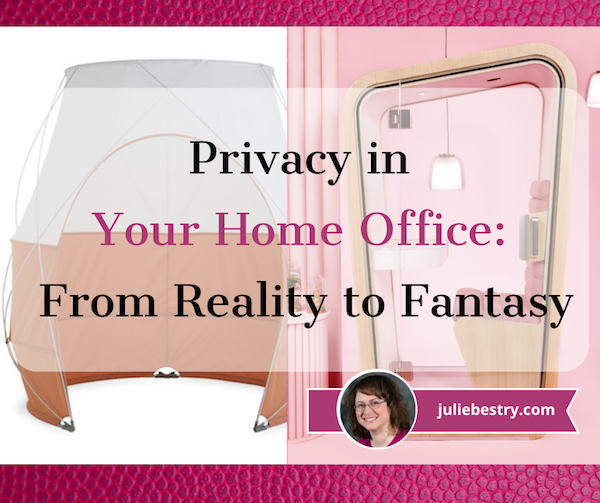
When Virginia Woolf wrote about having A Room of One’s Own almost a century ago, she wasn’t being entirely literal. She was talking about the lack of opportunities for expression that women in her day had. “A woman must have money and a room of her own if she is to write fiction,” Woolf wrote.
Of course, this was mainly a metaphor for all of the lack of access women of her era (and most eras) experienced: lack of money to access education, lack of career choices, lack of ability to guide one’s own future. “A room of one’s own” in terms of the metaphor is complex, but the concept has stood out in popular understanding both in the figurative sense as well as the literal one since the 1920s, when Woolf published the essays based on her lectures.
What does this have to do with organizing and productivity?
GIMME SOME SPACE (FOR MY STUFF)
We all — unrelated to gender or age or any of a variety of factors — need our own space to think, to create, to work, to strive toward greatness, and even to be our best selves. Nobody can be “on” 24/7/365. Having no private space amid the chaos, whether that’s in a home or office, eventually prevents us from achieving or even aspiring to achievements.
At the start of the pandemic, there was an enormous push to understand the needs of remote workers. Setting your laptop up at the kitchen table just wasn’t going to cut it. Everyone began to look at ideas for creating remote work spaces that were efficient, effective, productivity-supporting, comfortable, and private.
For an intensive primer on how to create a home office with storage that supports all of your needs, I encourage you to visit the guest post I wrote in 2021 for the excellent storage supply company, meori.
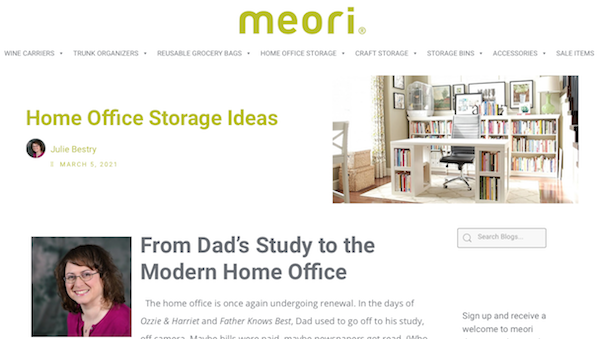
From Dad’s Study to the Modern Home Office covered everything you might want to know about home office design and storage. The post looked at why home office storage usually fails, the questions you should ask yourself to design better home office storage, and key strategies for creating your ideal work and storage space.
Of course, to create a room (or space) of one’s own, you have to look beyond the tangible. For example, for a deep dive into the emotional aspects of working remotely in the ongoing COVID era, you might want to visit my post The Perfect Unfolding As We Work From Home.
From a more interactive behavioral perspective, the classic Paper Doll post R-E-S-P-E-C-T: The Organizing Secret for Working At Home looked at how to create a work environment that ensures that others give us respect, and that we respect ourselves and our own time, energy, and attention.
PRIVACY, PLEASE
Privacy is essential. While we tend to think of privacy in an office setting as the ability to conduct our work without others overhearing our conversations, it’s important to also consider how much we needed to be protected from overstimulation caused by other people’s conversations (or pen-tapping, gum-chewing, or video game playing). We looked at this to some extent in Divide and Conquer: Improve Productivity With Privacy Screens.
Whether we are neurotypical or neurdivergent, we all need to find our own rhythms, and that can involve protecting ourselves from the visual and auditory stimulation that comes from being out in the world. Decades of work environments have taught me how I work best.
When I first worked in television, I had a small, windowless office with old-fashioned, oversized furniture. I had no visual disturbances, but even with the door closed, I could hear the hubbub of a “bullpen” situation right outside my door.
At my next TV station, my office was slightly larger, but near the back of the building, away from noise, and my one window looked out onto an A/C unit and the outer wall of a warehouse. Although I’m an extrovert, when I work I want as little outside stimuli as possible, and this was perfect; with my door closed, I could concentrate and focus entirely on my own thoughts.
My last TV station was in a converted auto sales showroom. The entire front wall of my ridiculously enormous office was made up of floor-to-(high)-ceiling windows looking out onto a parking lot and a busy highway. Others may have envied the space, but I had to keep the vertical blinds closed 90% of the time (both to keep out the blinding sunlight and the visual stimuli).
In my own home-based set-up for more than two decades, my desk faces a blank wall so that nothing beyond my computer screens can distract me. This might be hell for others, but it’s ideal for ensuring my focus.
Your mileage may vary.
FINDING YOUR IDEAL SPACE — REALITY AND FANTASY
You’ll find a lot of advice online for creating your own home office space with minimal effort. For example, you could:
- Remove the accordion doors from a bedroom closet and add a wide but shallow table as a desk.
- Add lighting fixtures and a desk in an alcove under the stairs to create a private Harry Potter-inspired workspace.
- Add a curving curtain rail on the ceiling (like the kind that creates privacy in hospital emergency rooms) to designate a corner of a bedroom or other area of the house as an office and separate the workspace from the rest of the area with a curtain.
- Use IKEA Kallax bookshelves (filled with books) to create a room divider to give a sense of privacy. (Feel free to watch the video with the sound off; the AI robotic voice insists on spelling Kallax out each time. The future is weird.)
But again, the internet abounds with such options. I thought it might be fun to look at a variety of standalone office ideas that range from the inexpensive and realistic to the when-you-get-that-huge-advance-on-your-great-American-novel option.
Sanwa Home Privacy Tent
Do you remember Party of Five? The mid-1990s Fox Broadcasting show about five young siblings trying to survive after a family tragedy launched the careers of Neve Campbell, Matthew Fox, Jennifer Love Hewitt, and Lacey Chabert, among others.
When I saw this first product, I was immediately reminded of how, in the earliest seasons, Chabert’s character Claudia created her own bedroom by putting up a tent in the middle of the living room. The Sanwa Home Privacy Tent (AKA the 200 Tent001) is designed for a similar purpose, carving out private space in the middle of pre-existing space.

It’s a basic nylon tent, not very large, but adequate for one person, a small desk for a laptop, and a lamp or other lighting source — to create a distraction-free workspace. Designed for indoor use, it’s suitable for studying or working. The super-portable tent weighs only 6 pounds, including the case, and measure 35″ x 43″ by 59″.
There’s a skylight/rooftop opening if you’d like more natural light, a side window, and a zippered entrance so you can be available for office hours (or for visits from your pets.) Admittedly, it’s not very pretty, but if you’re feeling overwhelmed by all of the sensory inputs in your home, apartment, or dorm, setting this up for some private workspace could be just the ticket for eliminating your stress.
The instructions apparently only come in Japanese, but as the video shows, assembly looks very intuitive — it pops open like a mesh laundry basket!
Sold for about $125 at various stores online, it’s currently sold out at the Japan Trend Shop where I first found it. (It is in stock if you want to purchase it directly from Sanwa in Japan for 7980 yen, or a bit over $61.)
Alternatively, if you search Amazon for “indoor tents,” you’ll mostly find children’s tents and playhouses for under $60, but I have to admit that I envy something breezy like this indoor playhouse. (It’s regularly about $110, but at multiple times over the last few weeks, I’ve seen it on sale for under $65.)

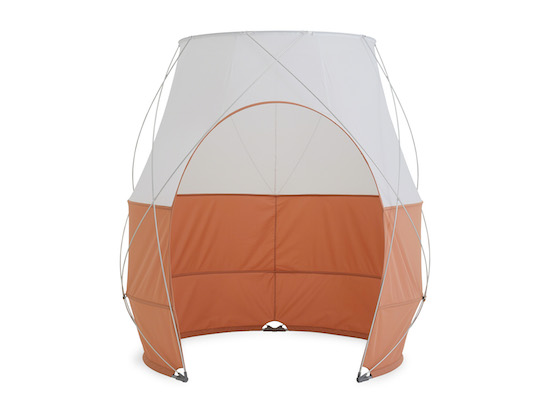
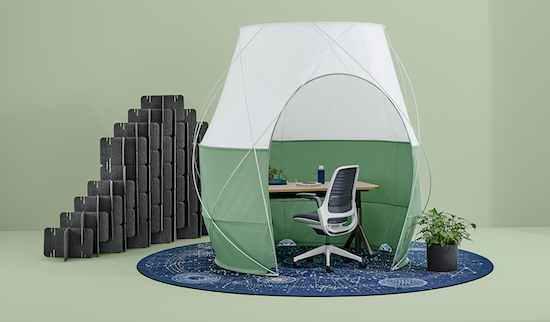
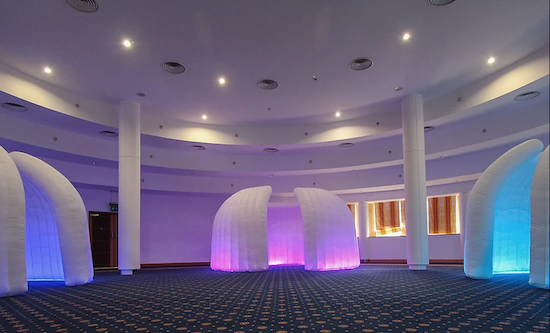
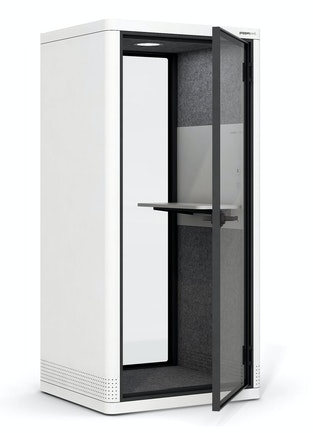 It comes with a built-in work surface and is ideal for when need to take confidential phone or Zoom calls. The rest of the line continues with the Kolo Collection (Kolo 1, Kolo 1+, Kolo 2, Kolo 4, and Kolo 6), all with sliding doors and providing work or conference space.
It comes with a built-in work surface and is ideal for when need to take confidential phone or Zoom calls. The rest of the line continues with the Kolo Collection (Kolo 1, Kolo 1+, Kolo 2, Kolo 4, and Kolo 6), all with sliding doors and providing work or conference space.
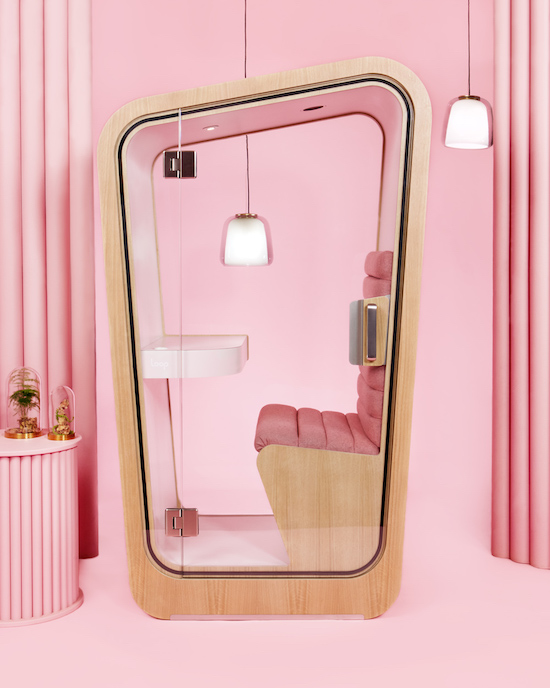





This was so fun!
First, I literally just used the Virginia Woolf quote in a conversation with a potential new client last Friday. The idea, and all its layers, definitely still resonates.
Second, I loved Get Smart. I’m sitting her waxing nostalgic.
All of these are fun little ideas for securing a bit of private space to work. Seems the trend to “open concept” has hit a bit of a bump in the post-COVID, work from home, world. (Will you be at the Summit? I’m talking about this a tiny bit in my session…)
On a funny note, I have adult children living with me now. One is working out of what used to be our playroom. It is a room with sliding doors that I don’t think I ever used. After about 8 months of use, the door hardware is starting to come loose. To me, it is a lesson in how things change, and how staying open to change is key for enjoying life. I’d much rather having a loose bit of hardware, with someone I love behind it, than a mint condition door outside of an empty room!
I’m so glad you enjoyed this. I’ve been looking at the Steelcase Office Pod tents for weeks, trying to figure out how to fashion a post around it, and I just kept thinking about how it offers up a room of one’s own. (And I really love those fantasy cottages for little kids; I’m not that tall, so I could make it work! Plus the some fairy lights would be lovely lighting for a Zoom call!)
And I think you’ve just written a perfect sentence for one of your future blog posts, Seana. “I’d much rather having a loose bit of hardware, with someone I love behind it, than a mint condition door outside of an empty room!” is lovely!
You were right. That was fun! Kudos for working in Virginia Woolf, Party of Five (a fave!), Get Smart (always love the Cone of Silence), and Superman. I have no use for any of these, but am always intrigued by privacy screens and schemes, including the ones where you can turn your dorm room bunk into a bed-shaped tent. Imaging being a tween-teenager with a Loop Solo in your room! (Yes, you would already have a room to yourself because your parents would be rich. And I’m thinking tween-teenager because of the color. Did all girls go through a pink and purple phase?) I did look and see that there are other colors and grown-up applications.
There were many other Loop Solo designs, but you knew I had to pick either pink or purple to share! I don’t know if all girls (or kids in general) go through such a phase, but I’m still there; it’s backlash against Paper Mommy designing an orange room in my childhood. Oy.
And I knew at least some of my pop culture references would resonate with you. The minute I saw pods and tents, I couldn’t stop thinking of little Claudia Salinger!
Oh boy! I love these pop-up home offices! They would even work for kids’ study spaces.
When my kids got older, I transformed part of my family room into my office, using an armoire as a divider. My husband and I finished the back of the armoire with decorative paneling, so it looked attractive on the family room side. It works great. I still wish I had a door, but I have invested in some great noise-canceling headsets to block out the noise.
Aren’t they fun? While the options got pricier as the post went on, I found myself wanting to try almost all of them! And I almost put other examples in the bulleted section about room dividers, but wanted this post to be a little shorter than my usual; I think your armoire example is an ideal one for many kinds of spaces. I hope you’ll share it on your blog!
Julie, what a fun read. I am so lucky to have a room of my own and I love it. I would be claustrophobic in the smaller places.
When I was a special education teacher, I had some cubbies built along one wall of my classroom. I “allowed” certain students with sensory problems who were easily distracted by stimuli to use those cubbies. I called them their offices and they were allowed to do some decorating to personalize them. Some had to be shared by different students who came at different times but we worked it all out as they were in demand.
I love that you had private “offices” for your students who needed less stimulation. I think education needs to be more personalized and should accommodate students needs in a way that helps that succeed. (I feel the same way about grownup offices!) Thanks for sharing that with us.